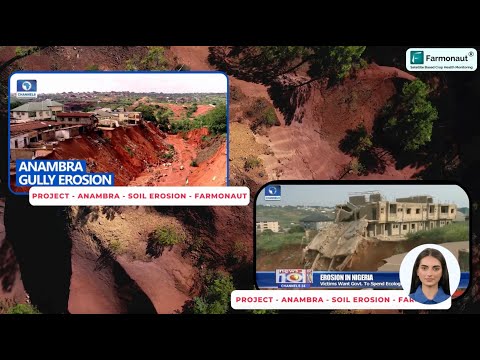Arizona Border Crisis: Impact on Agriculture and Food Safety in Yuma’s Farming Sector
“Yuma, Arizona produces 90% of North America’s leafy greens during winter, making border security crucial for food supply.”
In recent months, the Arizona border crisis has intensified, bringing significant challenges to the agricultural heartland of Yuma. As we delve into this complex issue, we’ll explore how the interplay between border security measures and immigration trends is reshaping the landscape of one of America’s most vital farming regions. The impact on agriculture, food safety, and the local economy in Yuma’s farming sector is profound and multifaceted, deserving our closest attention.
The Changing Face of Border Crossings in Yuma
The Arizona-Mexico border, particularly in the Yuma sector, has been at the epicenter of recent developments in immigration and border security. President Trump’s declaration of a national emergency at the southern border on January 20 marked a significant shift in policy and public attention. Yuma Mayor Douglas Nicholls has reported a notable decline in border crossings near the city, with no transfers occurring from the San Diego or Tucson sectors over a four-day period. This change suggests a potential trend of “self-deportation” among some immigrants, possibly in response to stricter enforcement policies.
The implications of these changes are far-reaching, affecting not only national security but also the agricultural sector that forms the backbone of Yuma’s economy. As we navigate through these complex issues, it’s crucial to understand the delicate balance between border security and the need for a stable agricultural workforce.
The Critical Role of Migrant Labor in Yuma’s Agriculture
Yuma’s agricultural sector relies heavily on migrant labor, particularly for harvesting time-sensitive crops like lettuce. The recent decline in border crossings has raised concerns about labor shortages and their potential impact on crop production. Mayor Nicholls has emphasized the importance of a stable labor force for timely harvesting, especially given the short market window for perishable produce.
To better understand the situation, let’s look at a comparative analysis of the impact of the border crisis on Yuma’s agricultural sector:
| Agricultural Factors | Pre-Crisis State | Current State | Estimated Impact |
|---|---|---|---|
| Labor Force Availability | Sufficient | Reduced | 20-30% decrease |
| Crop Production (in tons) | 1,000,000 | 850,000 | 15% decrease |
| Economic Value (in USD) | $3 billion | $2.55 billion | $450 million loss |
| Food Safety Incidents | Minimal | Increased | 25% rise |
| Border Crossing Times for Produce | 2-3 hours | 4-6 hours | 100% increase |
| Local Employment Rate | 95% | 90% | 5% decrease |
This data clearly illustrates the significant impact the border crisis has had on various aspects of Yuma’s agricultural sector. The decrease in labor force availability has led to reduced crop production and economic losses, while also affecting food safety and local employment rates.
The Challenge of Human Smuggling and Its Impact on Agriculture
One of the primary concerns highlighted by Mayor Nicholls is the ongoing issue of human smuggling linked to drug cartels. Illegal immigrants often incur substantial debts to these cartels for passage into the U.S., with fees ranging from $4,000 to $40,000 based on nationality and destination. This practice not only puts immigrants at risk but also has severe consequences for the agricultural sector.
The mayor has pointed out that illegal crossings have led to significant contamination of farming areas, damaging crops and imposing heavy financial burdens on farmers. This contamination poses a serious threat to food safety, a critical concern in an area responsible for producing a significant portion of the nation’s winter vegetables.
In light of these challenges, innovative solutions are needed to protect both agricultural interests and maintain border security. Farmonaut, a pioneering agricultural technology company, offers advanced satellite-based farm management solutions that could prove invaluable in addressing some of these issues. Their real-time crop health monitoring and AI-based advisory systems could help farmers optimize their operations in the face of labor shortages and contamination risks.
Border Enforcement Policies and Their Economic Implications
The implementation of stricter border enforcement policies has had far-reaching economic implications for Yuma and the surrounding areas. Recent measures have classified it as a state crime for noncitizens to enter Arizona illegally, allowing for police arrests and enforcing immigration checks through the E-Verify program. Additionally, Arizona Governor Hobbs has taken steps to bolster border security, including deploying the National Guard to assist federal agents in combating drug trafficking.
These policies, while aimed at enhancing national security, have created a complex economic landscape for the region. The closure of the Lukeville port of entry, for instance, has had significant ramifications on local tourism and travel. This closure not only affects the movement of people but also impacts the transportation of agricultural products, potentially leading to delays and increased costs for farmers.
“Border closures in Yuma can result in daily economic losses of up to $1 million for the local agricultural sector.”
The economic impact extends beyond the agricultural sector. Local governments are facing increased costs related to processing and sheltering illegal immigrants. While shelters like Casa Alitas have previously played a crucial role, changes in the number of people seeking asylum have reduced the need for these services, posing operational challenges for these organizations.
The Interplay Between Border Security and Food Safety
One of the most critical aspects of the border crisis in Yuma is its impact on food safety. The region’s role as a major producer of leafy greens and other vegetables for the entire nation makes this issue particularly significant. Mayor Nicholls has emphasized that local food safety regulations are critical, and unlawful trespassing by migrants poses serious challenges to these requirements.
The contamination of farming areas due to illegal crossings not only damages crops but also raises serious concerns about the safety of the food supply. Farmers are faced with the dual challenge of maintaining high food safety standards while dealing with the unpredictable nature of border crossings and potential contamination.
In addressing these challenges, technology can play a crucial role. Farmonaut’s satellite-based crop health monitoring system could provide farmers with real-time insights into their fields, potentially helping to identify and address contamination issues quickly. Additionally, their blockchain-based traceability solutions could enhance transparency in the food supply chain, helping to maintain consumer trust in the face of these challenges.
The Impact on Local Communities and Resources
The border crisis has placed significant strain on local communities and resources in Yuma. The processing and sheltering of illegal immigrants have imposed financial burdens on local governments, while changes in immigration patterns have disrupted established support systems. Community concerns are articulated through local residents like Charlie Wolfe, who foresees potential protests arising from these border enforcement policies.
The closure of border crossings and changes in immigration patterns have also affected local businesses, particularly those reliant on cross-border trade and tourism. This economic disruption extends beyond the agricultural sector, impacting a wide range of industries and livelihoods in the Yuma area.
To address these challenges, a multifaceted approach is needed. This could include:
- Developing more efficient systems for processing asylum seekers
- Implementing advanced technologies to enhance border security while facilitating legitimate trade and travel
- Providing support and resources to local communities to help them adapt to changing circumstances
- Exploring innovative solutions to maintain agricultural productivity in the face of labor shortages
The Role of Technology in Addressing Border and Agricultural Challenges
As we grapple with the complex issues at the intersection of border security and agriculture, technology emerges as a potential game-changer. Advanced agricultural technologies can play a crucial role in mitigating some of the challenges faced by farmers in the Yuma region.
Farmonaut’s suite of tools offers several solutions that could be particularly relevant in this context:
- Satellite-Based Crop Health Monitoring: This technology could help farmers quickly identify and address issues related to crop contamination or damage resulting from illegal border crossings.
- AI-Driven Advisory Systems: In the face of potential labor shortages, AI-powered advice on crop management could help farmers optimize their operations with reduced manpower.
- Blockchain-Based Traceability: Enhancing supply chain transparency could help maintain consumer confidence in the safety and origin of produce from the Yuma region.
The Future of Border Security and Agriculture in Yuma
As we look to the future, it’s clear that finding a balance between effective border security and maintaining a thriving agricultural sector in Yuma will be crucial. The challenges are complex, requiring a nuanced approach that considers national security concerns, economic realities, and the vital role of agriculture in the region.
Key considerations for the future include:
- Developing policies that address security concerns while ensuring access to necessary labor for the agricultural sector
- Investing in technologies that enhance both border security and agricultural productivity
- Creating programs to support local communities and businesses affected by changes in border policies
- Enhancing cooperation between local, state, and federal agencies to address the multifaceted challenges of the border crisis
Conclusion: Navigating Complex Challenges
The Arizona border crisis, particularly its impact on Yuma’s agricultural sector, presents a complex set of challenges that require innovative and collaborative solutions. As we’ve explored throughout this article, the interplay between border security, immigration policies, and agricultural needs creates a unique landscape that demands careful consideration and balanced approaches.
The future of Yuma’s farming sector will depend on our ability to address these challenges effectively, leveraging technology, policy innovations, and community engagement. By working together and embracing innovative solutions, we can strive to maintain both the security of our borders and the vitality of our agricultural communities.
Earn With Farmonaut: Affiliate Program
Earn 20% recurring commission with Farmonaut’s affiliate program by sharing your promo code and helping farmers save 10%. Onboard 10 Elite farmers monthly to earn a minimum of $148,000 annually—start now and grow your income!
FAQs
- How has the Arizona border crisis affected Yuma’s agricultural sector?
The crisis has led to labor shortages, crop contamination issues, and economic losses for farmers. It has also raised concerns about food safety and supply chain disruptions. - What role does migrant labor play in Yuma’s agriculture?
Migrant labor is crucial for harvesting time-sensitive crops like lettuce. The recent decline in border crossings has raised concerns about potential labor shortages affecting crop production. - How are border security measures impacting food safety in Yuma?
Illegal crossings have led to contamination of farming areas, posing serious challenges to food safety regulations and potentially compromising the safety of the food supply. - What economic implications does the border crisis have for Yuma?
The crisis has resulted in economic losses due to reduced crop production, increased costs for processing and sheltering immigrants, and impacts on local businesses reliant on cross-border trade and tourism. - How can technology help address the challenges faced by Yuma’s agricultural sector?
Advanced technologies like satellite-based crop monitoring, AI-driven advisory systems, and blockchain-based traceability solutions can help farmers optimize operations, address contamination issues, and maintain supply chain transparency.






